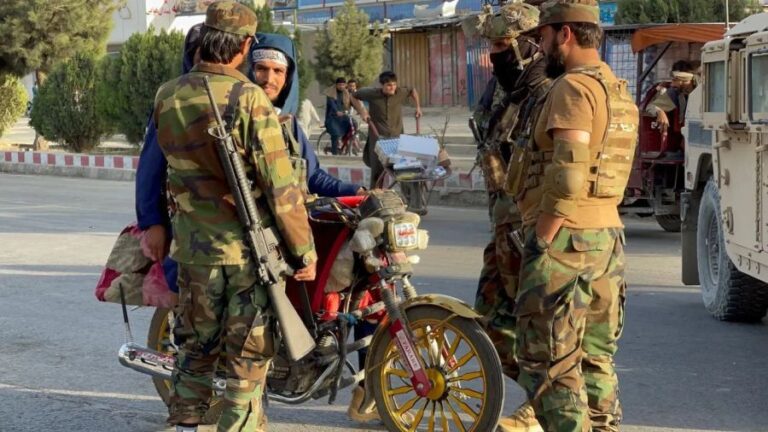Peace in Afghanistan Will Not be Possible Until Kabul Acknowledges the Durand Line
While contemporary disputes between Afghanistan and Pakistan continue to permeate the consciousness of regional observers as well as international peace keepers, the reality is that it is an 1893 colonial era agreement that continues to prevent a genuine sense of trust and transparency from being achieved between Kabul and Islamabad. While the modern disputes between Pakistan and Afghanistan cover a wide variety of issues, there is one such issue that is literally a line in the sand (or perhaps described more accurately a line in the mountains) that prohibits the kind of bilateral trust necessary in order for the neighbours to work together to secure a lasting regional piece.
Throughout the 19th century, the British Empire fought many wars with Afghan rulers due to fears that the English historian Robert Lord Blake says were largely unfounded, which claimed that Russia sought and was capable of expansion into Afghan territory which sat on the western flank of the British Raj (aka colonial India which included the territory of modern Pakistan).
As Britain’s wars against the Afghans tended to go from bad to worse, in 1893, Britain reached an agreement with Afghan Emir Abdur Rahman Khan. The agreement demarcated the formal boundary between the north-western frontiers of the British Raj and Afghanistan and was intended to prevent Russia from ever having access to the Khyber Pass – a vital trading route between modern Pakistan and Afghanistan. This border is known as the Durand Line – named for UK diplomat Sir Mortimer Durand. The Druand line was again confirmed in the 1919 Treaty of Rawalpindi between the British Raj and Afghanistan. Crucially, unlike the case with modern India and China whose border disputes stem from contradictory demarcations made by the British Raj in agreements with China throughout the 19th and early 20th centuries, the Durand line remains unambiguous in its status as the dividing line between Pakistan and Afghanistan. This is why it is all the more absurd that Kabul still refuses to acknowledge this clear frontier.
Like with so many border disputes in south Asia, the Druand Line continues to be a colonial holdover yet one which since 1947 has become an intrinsic element relating to Pakistan’s territorial, ethnic and political unity. Thus, while the Druand line is colonial in its origin, its meaning today is one central to Pakistan’s modern, post-colonial identity as a sovereign republic.
Beyond this, because modern Afghan rulers have not accepted or even acknowledged the Druand line, far from rejecting a colonial attribute, Kabul has consistently rejected a recognition of Pakistan’s modern, post-colonial territorial integrity. Hence, respecting the Druand line in 2018 is tantamount to respecting Pakistan’s right to exist within its legally defined and internationally recognised territory.
While terror groups tend not to care about squabbles between states over borders, when it comes to Afghan derived terror pouring into Pakistan as it has for decades, Kabul’s official non-recognition of the Druand line has been little more than carte blanche to terror groups who seek to inflict pain and suffering on Pakistan. Furthermore, many Kabul based regimes have used the call for a “greater Afghanistan” (sometimes called a “greater Pashtunistan) to openly agitate against Pakistan’s territorial integrity. This is clearly not a recipe for regional piece – it is in fact a harbinger of sustained conflict.
While many falsely accuse Islamabad of taking an ideological view on the political turbulence of its Afghan neighbour, the reality is that in the 1980s and 1990s, the reason why some in Islamabad were naturally sympathetic to the Mujaheddin and later to the Taliban was for one simple reason – the goal of the Afghan Taliban was to establish a state based on religious rather than nationalist characteristics. Because so much of both leftist and secular-conservative Afghan nationalism was framed around the concept of a “greater Afghanistan”, a concept which necessarily threatens Pakistan’s peace and unity, it was only natural for Islamabad to be sympathetic with those who did not hold such beliefs.
Today, Pakistan, China and perhaps the unlikely but highly important partner of Russia are working within a framework that stresses the importance of an all-parties peace process in Afghanistan. This means that the anti-Taliban Pashtuns and non-Pashtun ethnicities represented in the current Kabul government must sit at a peace table with the Taliban and agree to de-escalate the situation on the ground. Beyond this, it is the intention of Pakistan, Russia, China and now also Iran to help Afghans develop a political solution to their long running problems which have only been exacerbated by the presence of American troops and the threat of America inviting India into a situation where the presence of Indian troops would serve to provoke Pakistan rather than contribute to a peace process which ought to be political rather than military in nature.
But before any all-parties peace conference can happen, all parties in Afghanistan must agree to acknowledge and respect the Durand line. If this does not happen, it risks having Pakistan negotiate from a position where it could set itself up to be taken advantage of by forces that have done so in the past (including the very recent past). If Pakistan and Afghanistan are to co-exist in peace, it is a fundamental requirement that Afghanistan understands where its borders end and where Pakistan’s begin.
By Adam Garrie
Source: Eurasia Future








Does one require too high an intelligence quotient to see who is behind Afghan’s not accepting the Durand Line? And to see it is yet another of the dirty legacies of British Imperialism in the region! The Border Fence, which the Afghan forces like to keep attacking every now and then, is the modern-day demarcation of the Durand Line by all means, and whether or not Afghanistan and its current masters like it, one way or the other they will have to deal with the reality on ground… quite strange though… India and Afghanistan both seem to harbour similar territorial illusions in this region… quite revealing…!